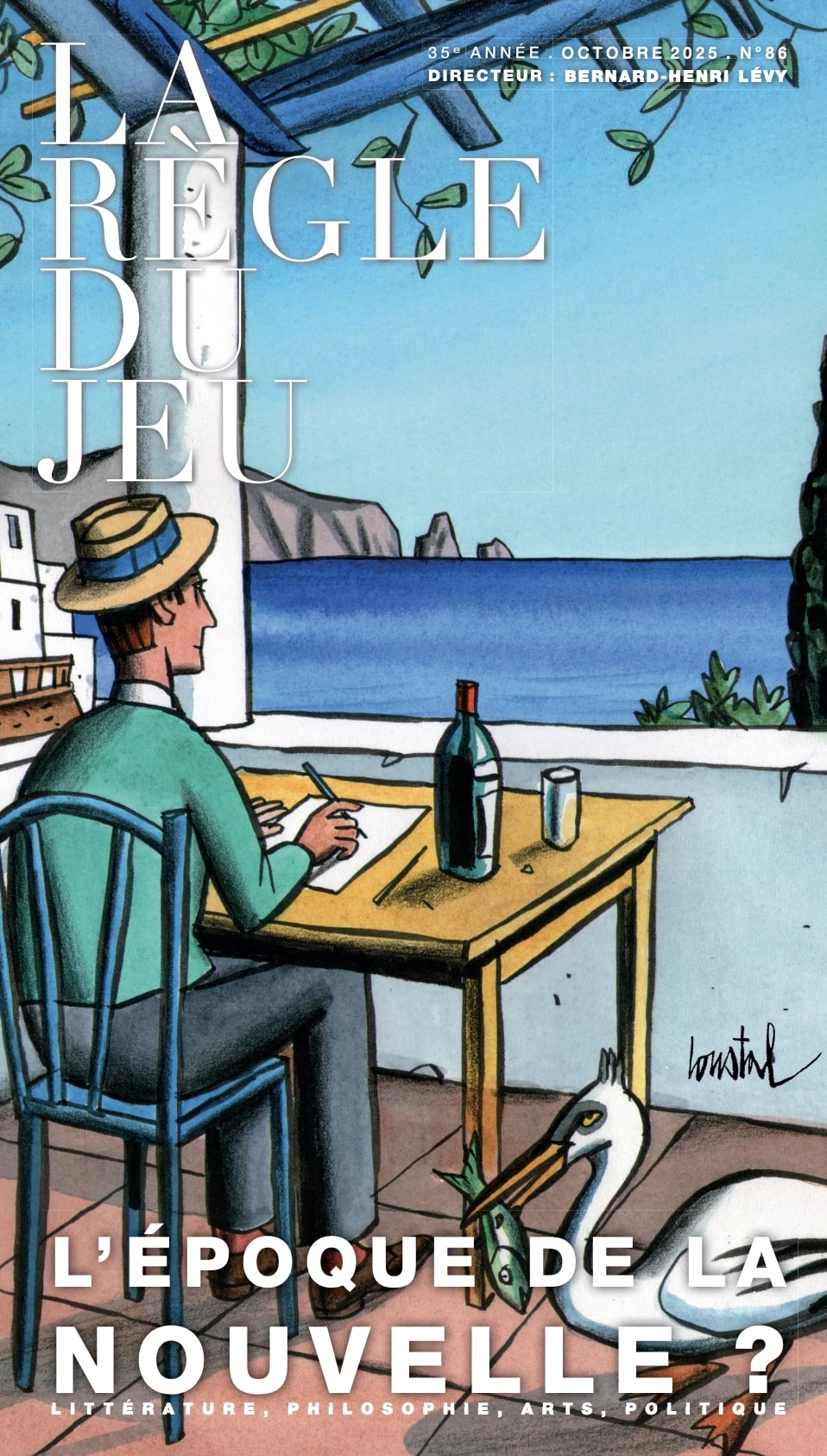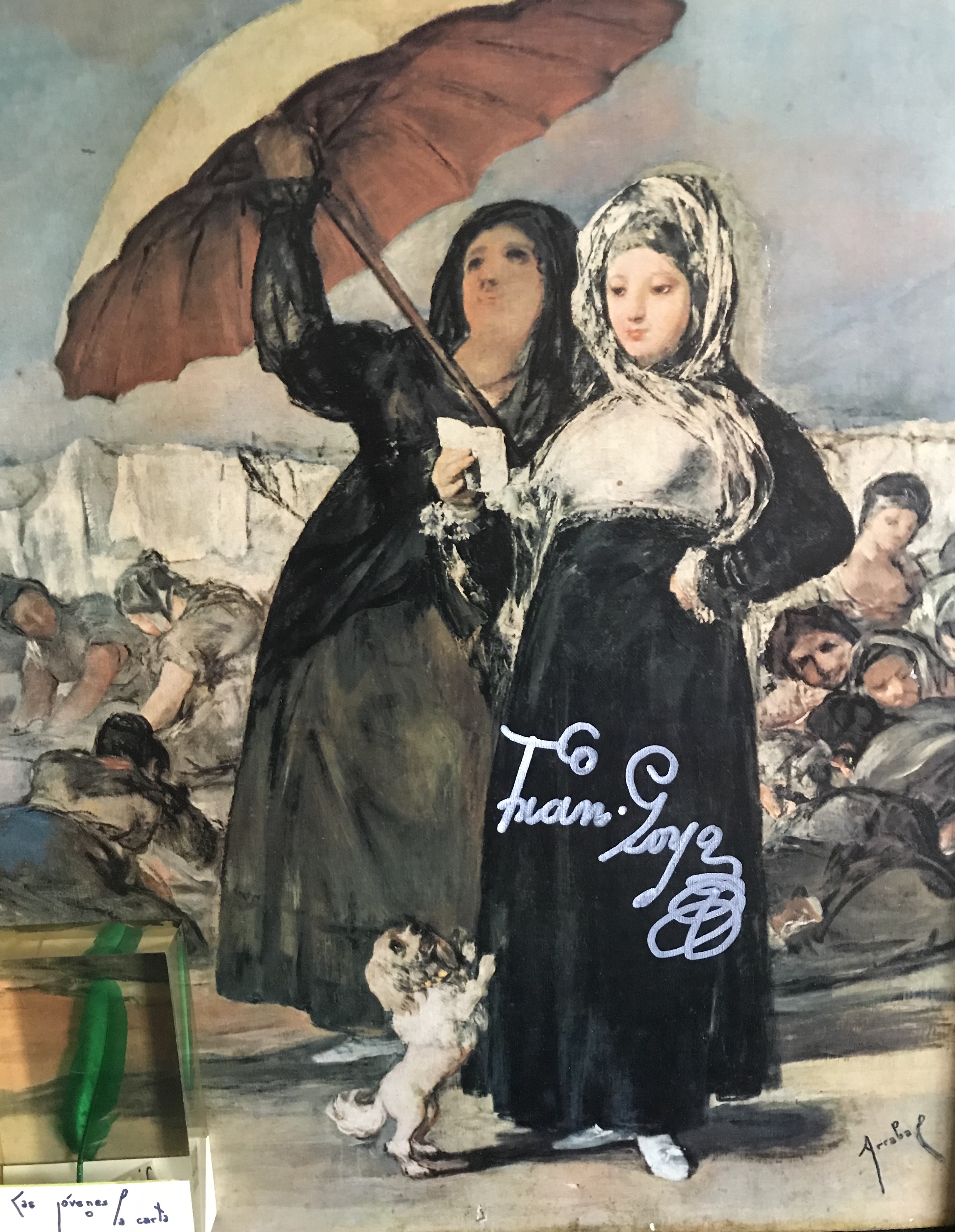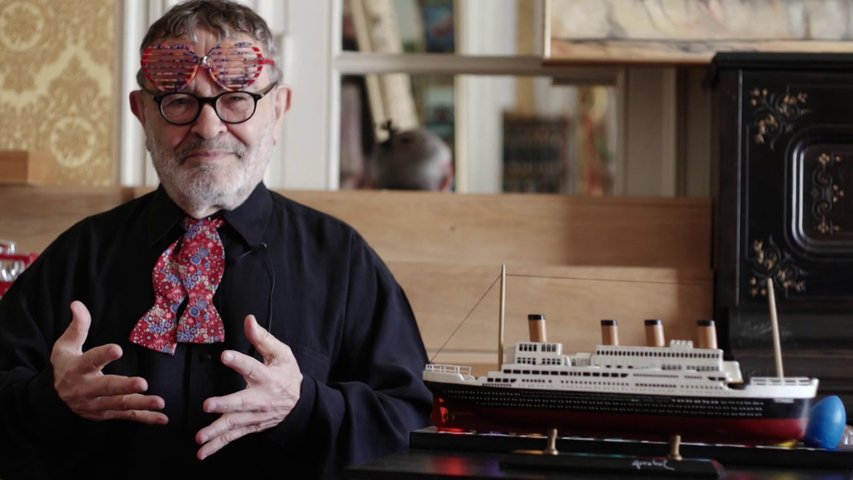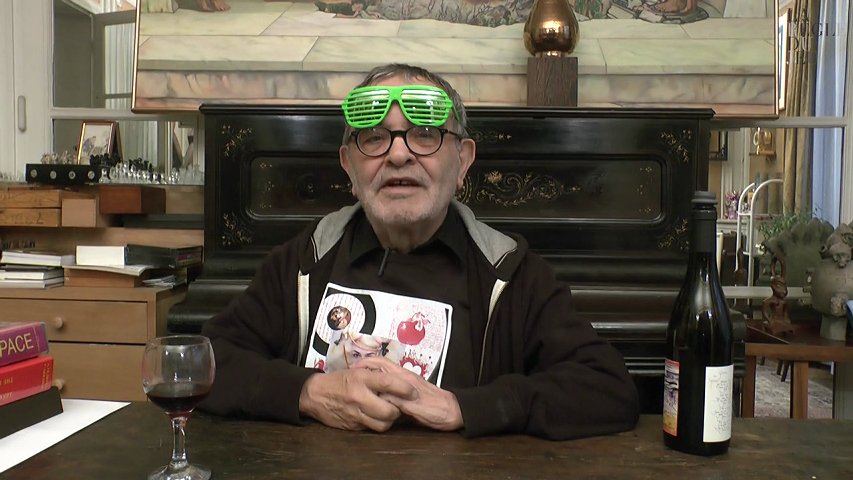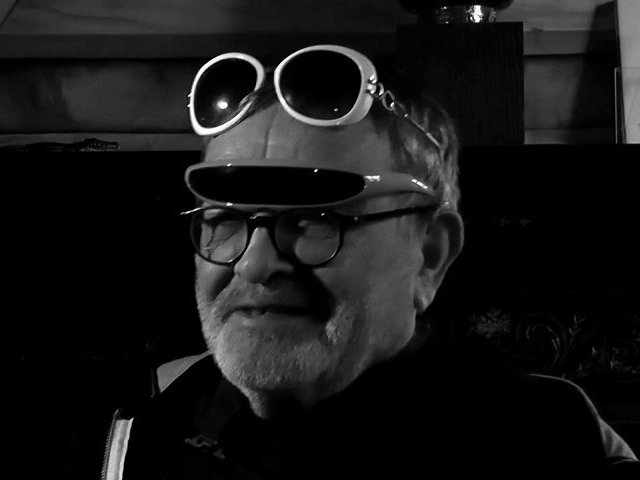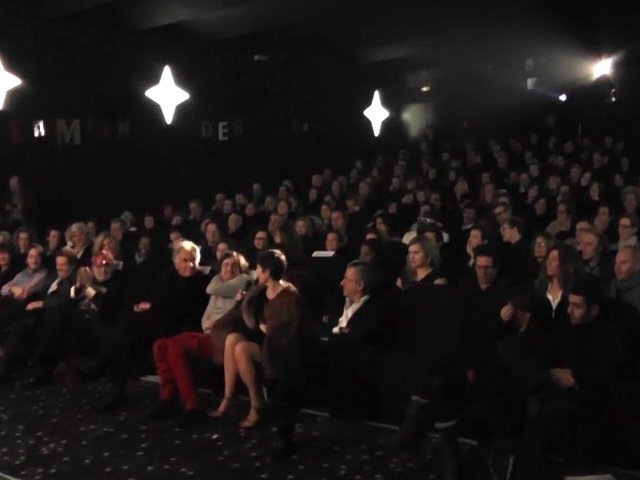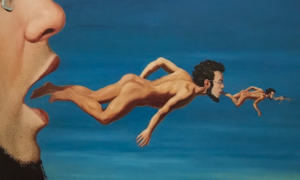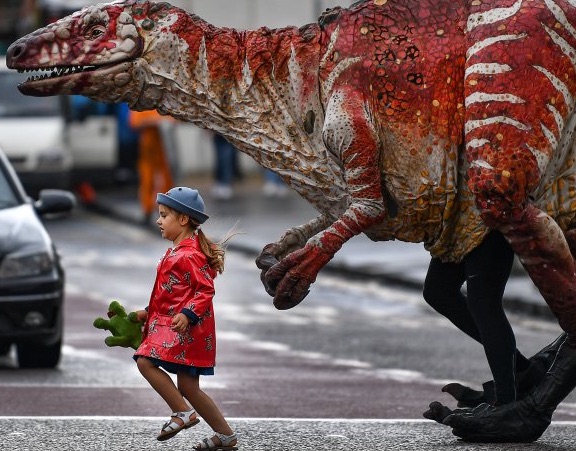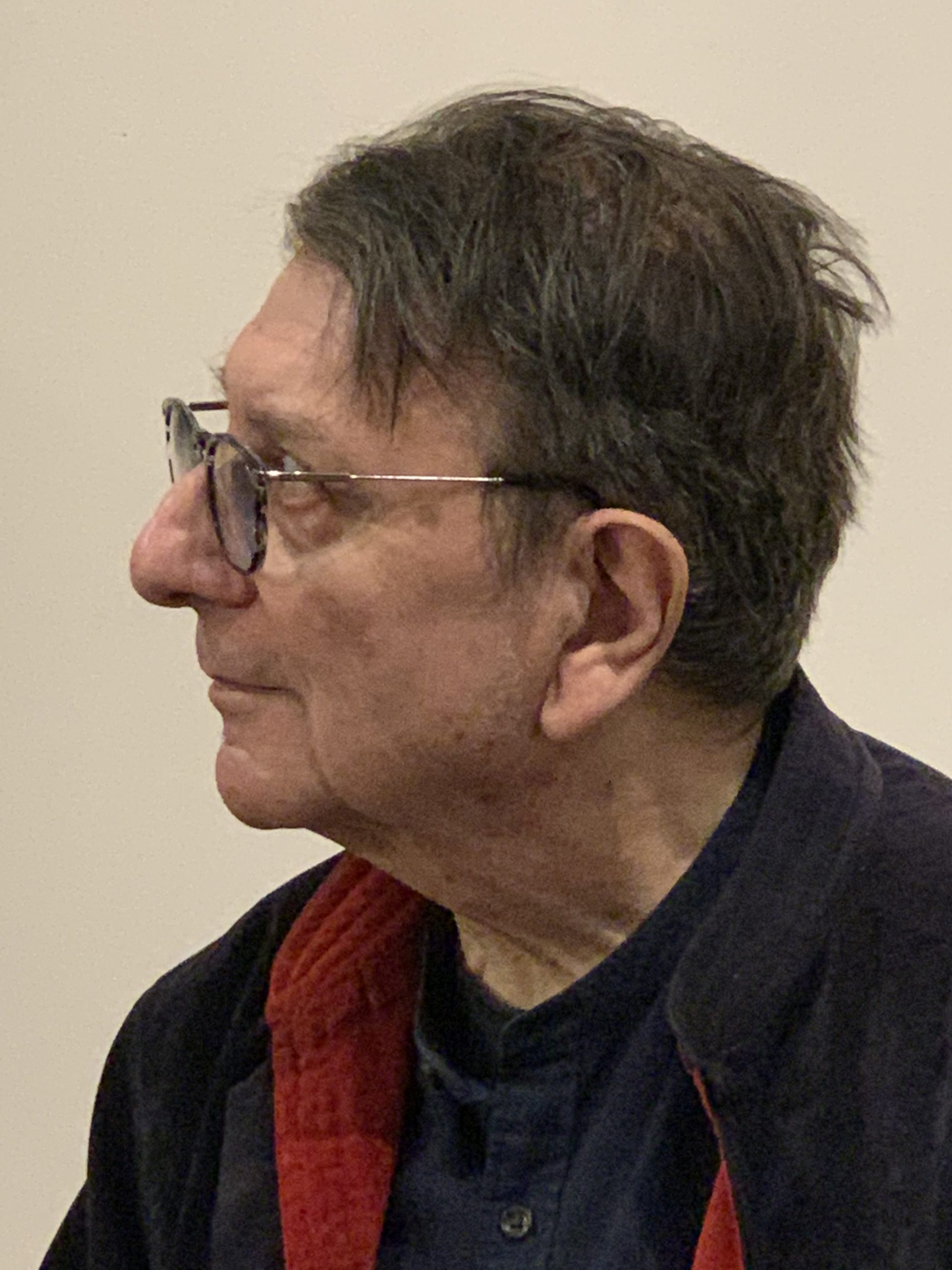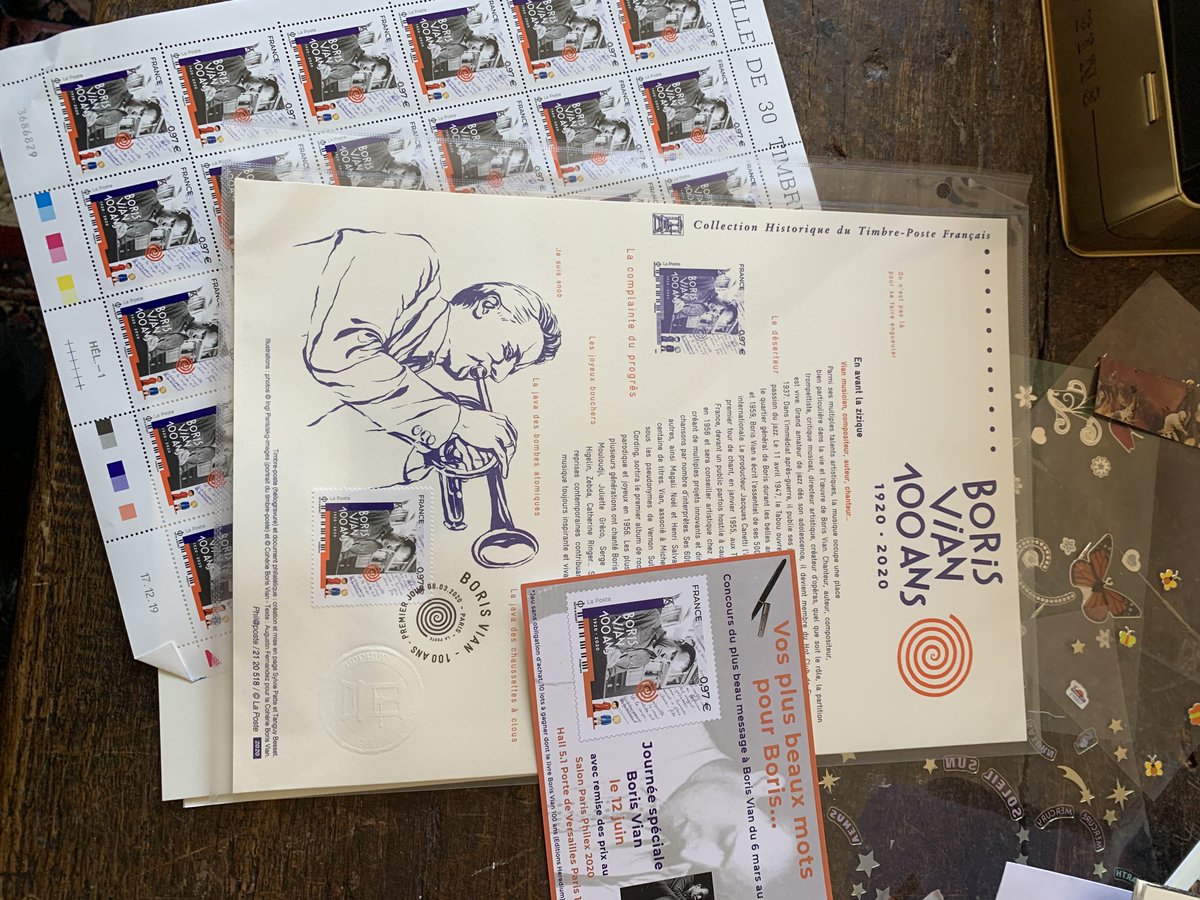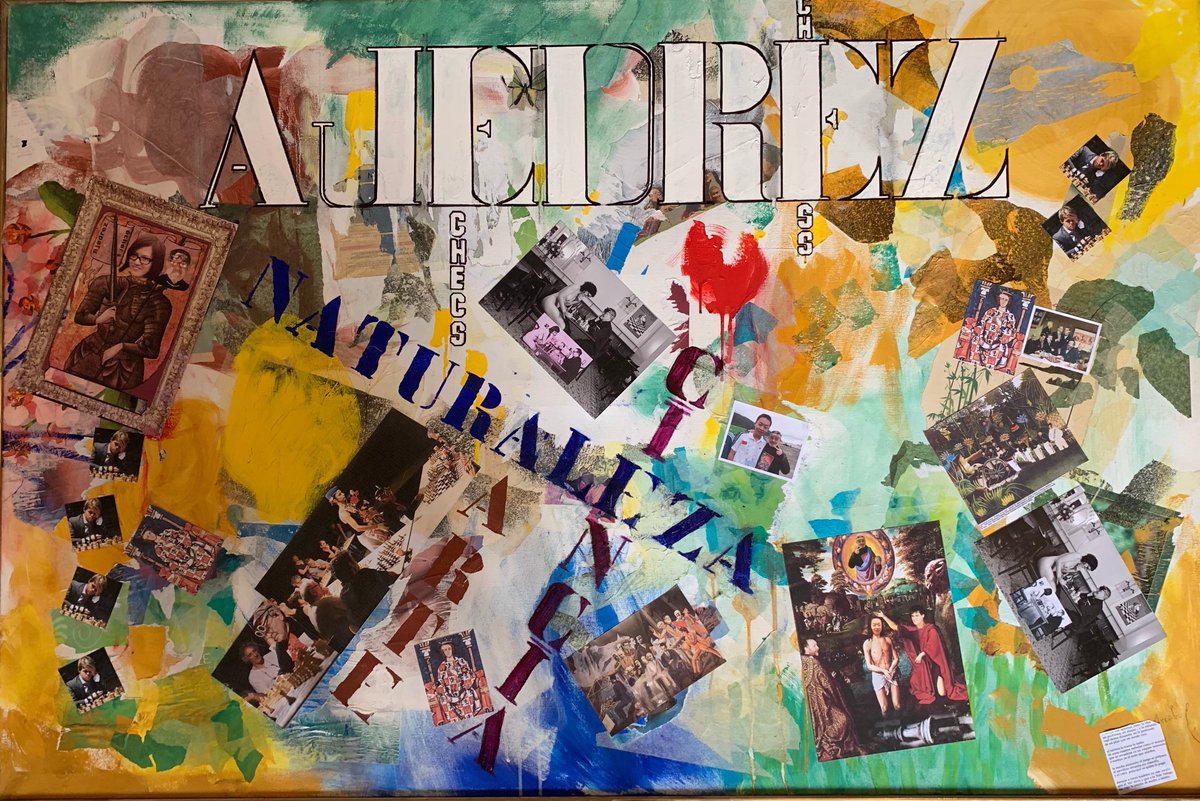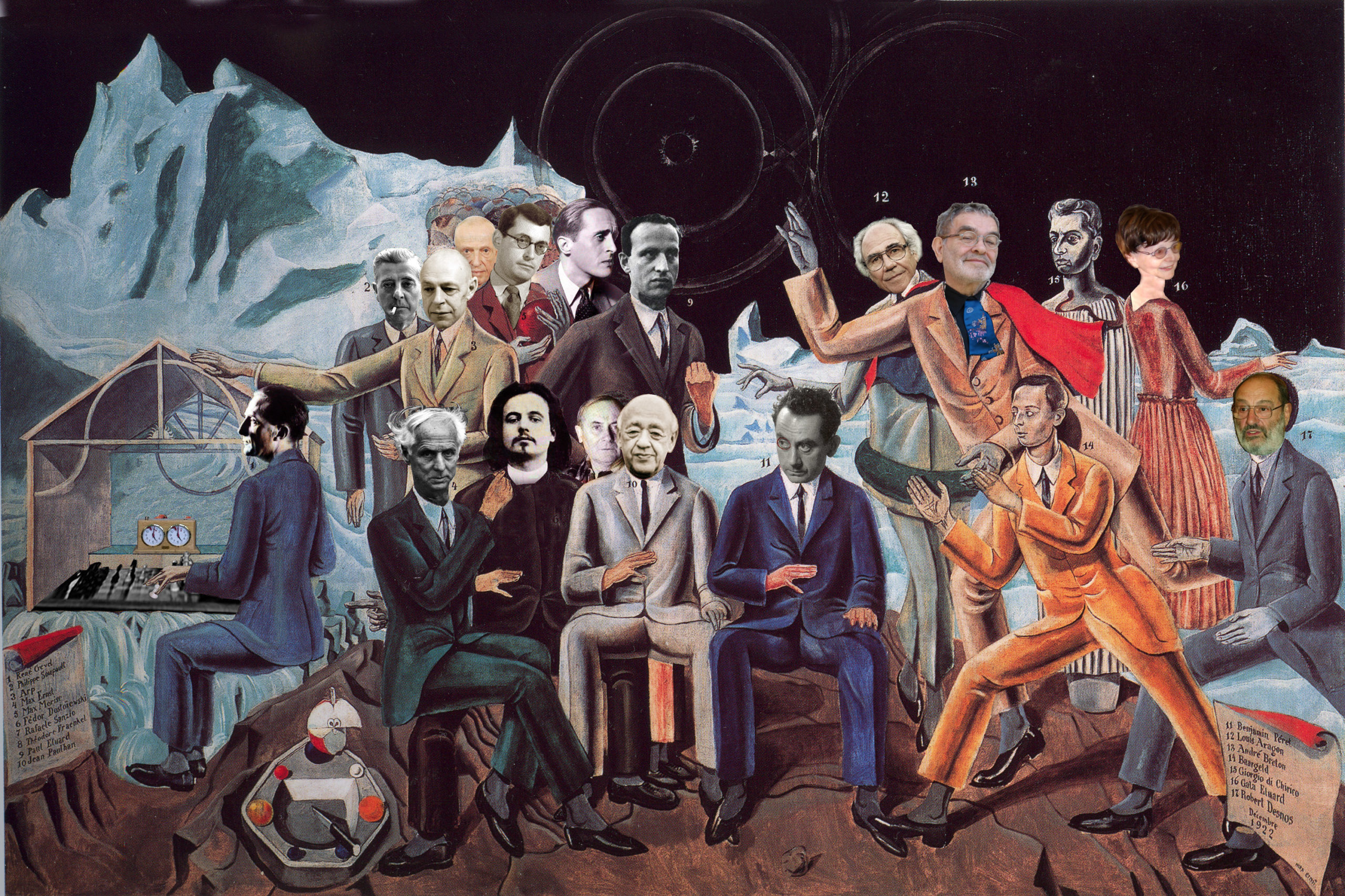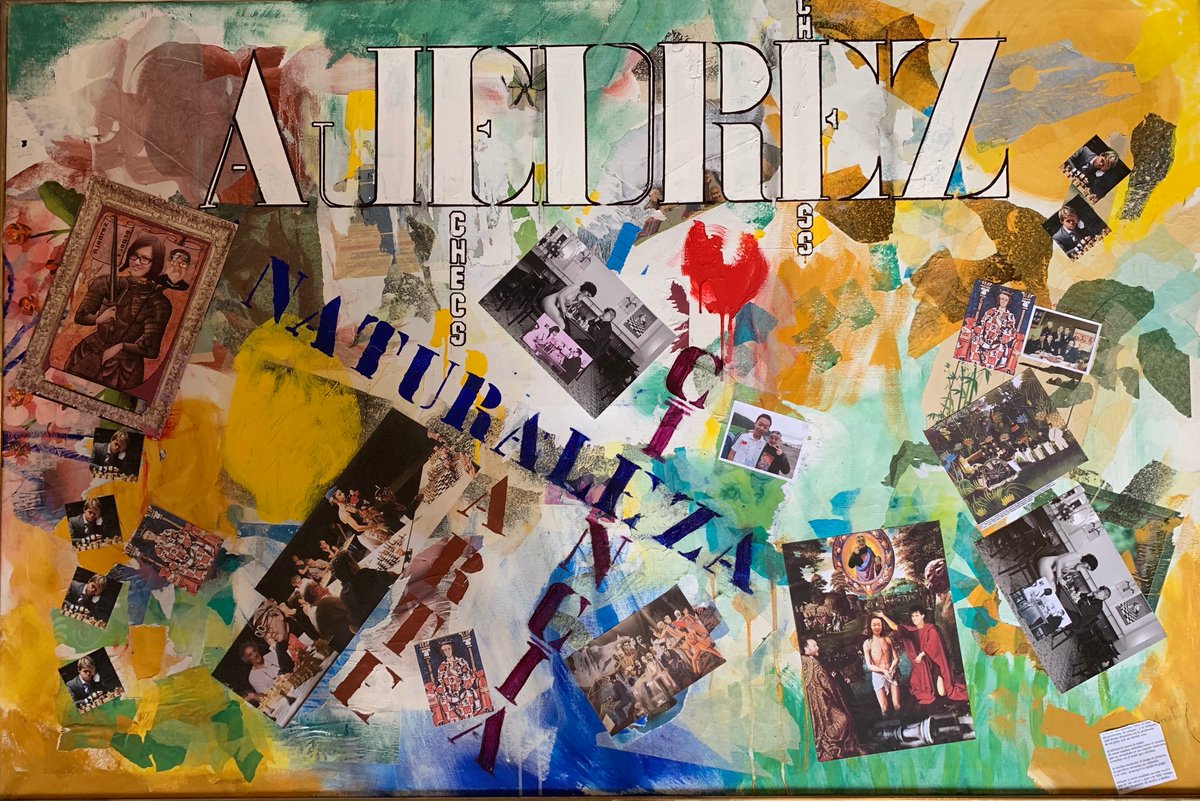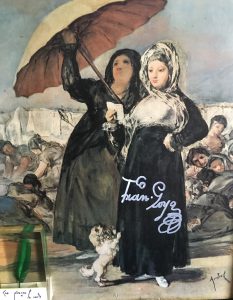 « Las jóvenes » o « La carta »
« Las jóvenes » o « La carta »
Poema plástico de 57 cm x 38 cm
***
« Les Jeunes » ou « Jeune femme lisant une lettre » ou « La Lettre » est l’une des huiles sur toile (181 cm x 125 cm) peintes par Francisco de Goya …en 1812? Son style a clairement évolué vers les critiques de la vie sociale, les satires et un parti pris pour les Lumières. Au premier plan, une aristocrate vêtue à la façon des « majas » lit oisivement une lettre sous une ombrelle portée par une servante au second plan. Un petit chien à ses pieds tente de la distraire. Au troisième plan, des lavandières travaillent en plein soleil. Le peintre insiste sur les inégalités sociales ; non seulement entre la protagoniste, uniquement préoccupée par ses histoires de cœur, et sa servante, qui la protège avec une ombrelle, mais également vis-à-vis des lavandières en arrière-plan, agenouillées et exposées au soleil. « Expuestas a un sol de justicia ».
MAJA: Aristocrate qui s’encanaille habillée simplement comme une femme du peuple.
« Maja, mujer del pueblo » qui se distingue por un traje particular, par un port gracieux, par un costume particulier et par ses manières pleines de grâce.
***
« …the unfinished work was discovered underneath Goya’s Portrait of Don Ramon Satue, using a new X-ray technique. The Rijksmuseum says the Spanish master may have covered up the portrait for political reasons. Joseph Bonaparte was briefly King of Spain, from 1808-1813. When the Napoleonic army was driven out and Ferdinand VII restored to the throne, Goya, who retained the painting, would have wanted to distance himself from the French regime. The artist had served the French king. Eventually, unhappy with Ferdinand VII’s autocratic regime, he applied for permission to settle in France, where he lived until his death in 1828. The new painting was revealed using a technique developed by the University of Antwerp and the Delft University of Technology. According to the Rijksmuseum, the Goya painting is a formal portrait of a man wearing uniform.The detail on his face was never completed, but « the decorations embellishing the uniform are those of the highest ranks of a chivalric order instituted by Joseph Bonaparte when his brother, the emperor Napoleon, created him King Of Spain ». Only 15 generals, plus Joseph, were entitled to wear the uniform and medal, although so far it has proved impossible to pin down exactly which of them is depicted … »Goya était le ‘peintre de la cour’ de Joseph Bonaparte Hispaniarum et Indiarium Rex de 1808 à 1813… »
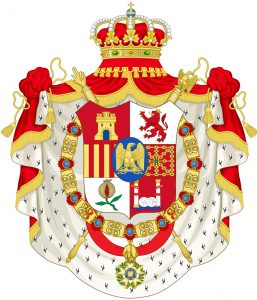
Un oficial de « La Tesorería de Fernando VII » informa a Goya el 9 de marzo de 1814 de la siguiente manera, a fin de que comenzara a trabajar cuanto antes en sus cuadros:
« En consideración a la grande importancia de tan loable empresa y la notoria capacidad del dicho profesor para desempeñarla, ha tenido a bien admitir su propuesta y mandar en consecuencia que mientras el mencionado Dn. Francisco Goya esté empleado en este trabajo, se le satisfaga por Tesorería mayor, además de lo que por sus cuentas resulte invertido en lienzos, aparejos y colores, la cantidad de mil y quinientos reales de vellón mensuales por vía de compensación. »
